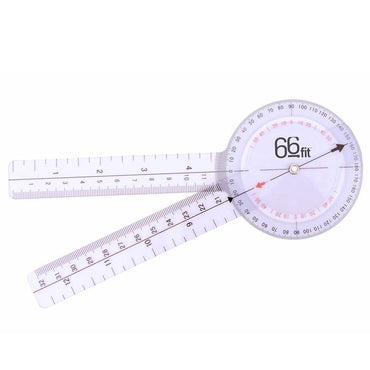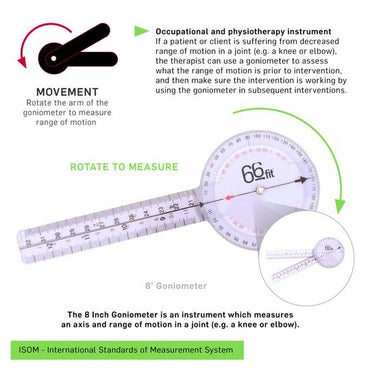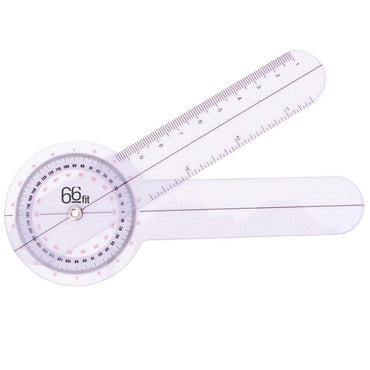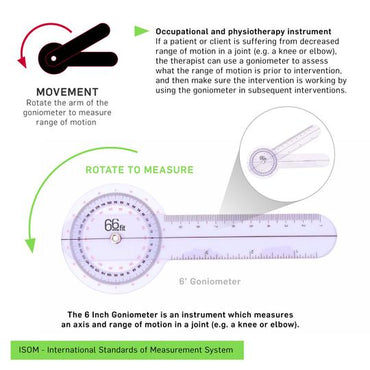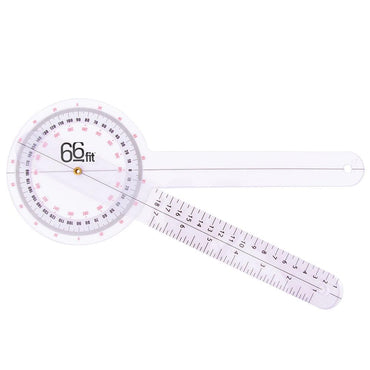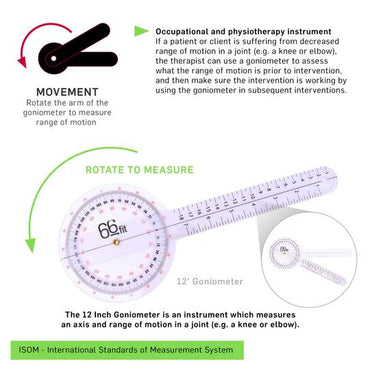Goniometers
Goniometers are instruments used to measure an angle or allow an object to be rotated into a specific angular position. They are often used by physiotherapists and other medical professionals to measure the range of motion in a joint. Using a goniometer allows physiotherapists to accurately assess the range of motion before working with the client to improve it. It can then be used to measure the new range of motion and you can see real results. Goniometers are useful tools for any physiotherapist to have, and we stock a huge range here at Physiosupplies.
Goniometers in Ireland
Small and easy to store, goniometers are essentials for any physiotherapist or medical professional to keep in their office or in their bag. They can help you measure the range of motion for your clients and then see how they improve over time.
Available in a variety of sizes, you’ll be able to stock up on all of the essentials that you need. You can measure different joints and ranges of motion using different sizes for a more accurate reading.
At Physiosupplies, we are proud to be 100% Irish owned. Want to buy the best in Ireland or have some questions about an order you want to play? Contact us today.
FAQs
What are goniometers used for?
Goniometers are used to measure angles and accurately read the rotation of an object, such as the joint. It is especially useful in physiotherapy when clients are struggling with limited or reduced motion. The goniometer tells the physiotherapist the starting point to work from.
How accurate are goniometers?
When used correctly, goniometers are accurate, although many report that there is a difference of 10°. In order to ensure that the reading you get is as accurate as can be, getting a few readings from different positions can help.
How do I use a goniometer?
It is important to use the same goniometer to ensure that the chances of instrumental error are reduced. You should start by making sure the part of the body you want to measure is free. You can then line up the first arm with the body part when resting. Once you have it in place, get the patient to move their arm and support them when they reach the highest range of motion. You can then move the secondary arm on the goniometer, which will tell you the angle of movement.

